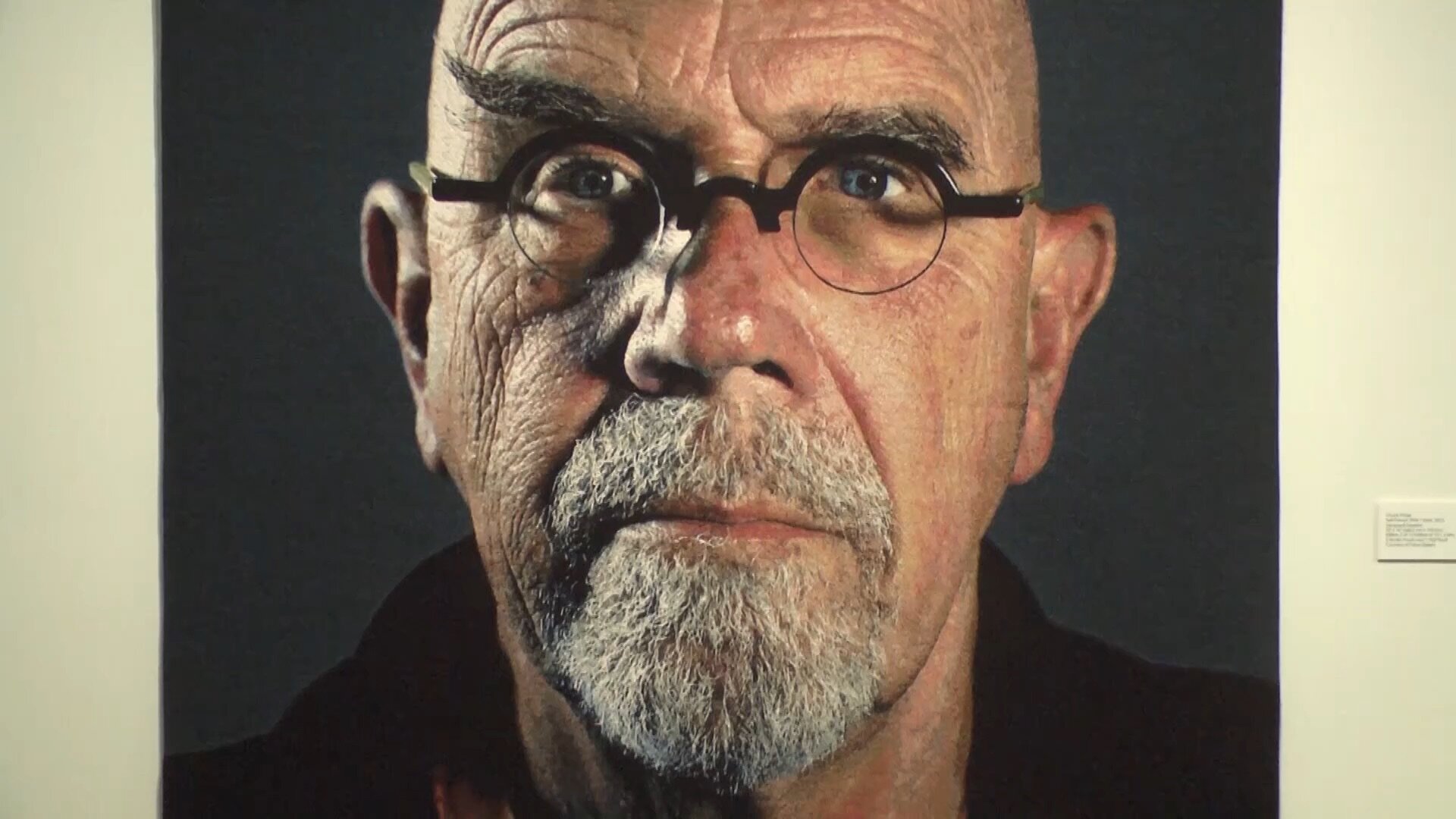Chuck Close
CHUCK CLOSE
Chuck Close (1940 - 2021) was born in Monroe, Washington. He graduated with a B.A. from the University of Washington and continued his studies at Yale earning both a BFA and MFA there. Close is best known for his large-scale painted portraits made with the use of a grid system. The process results in a pixelated mosaic of layered shapes and colors combined to form a uniform image. Close was left paralyzed in 1988 in the wake of a spinal artery collapse, but through rehabilitation regained his ability to paint. He continued his examinations of portraiture through productions of silk tapestries and large-scale Jacquard tapestry portraits.
Close's first solo show was at the Bykert Gallery, New York (1970), and his first museum exhibition was at the Museum of Modern Art, New York (1973). Throughout his decades-long career, his work has been exhibited widely including at the Whitney Museum of American Art and the Metropolitan Museum of Art both in New York, the Walker Art Center, Minneapolis, the National Gallery of Art in Washington, D.C., and the J. Paul Getty Museum in Los Angeles, and the Los Angeles County Museum of Art among others. Close's work is in the permanent collections of myriad museums worldwide, a partial list of which includes: the Albright-Knox Art Gallery in Buffalo, the Centre Pompidou in Paris, the Hirshhorn Museum and the National Portrait Gallery in Washington D.C., as well as, the National Portrait Gallery and Tate Museum both in London, the Guggenheim in New York, the Louisiana Museum of Modern Art in Denmark and Yale University Art Gallery. In 2010 Close was appointed by President Barack Obama to the President's Committee on Arts and Humanities, an advisory body to federal arts agencies.
For this profile, Chuck Close was interviewed in 2013 in his studio when it was located on Bond Street in New York City. Footage from his Guild Hall, East Hampton, and Berggruen Gallery San Francisco exhibitions from the same year are also featured.























